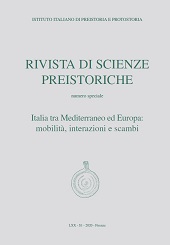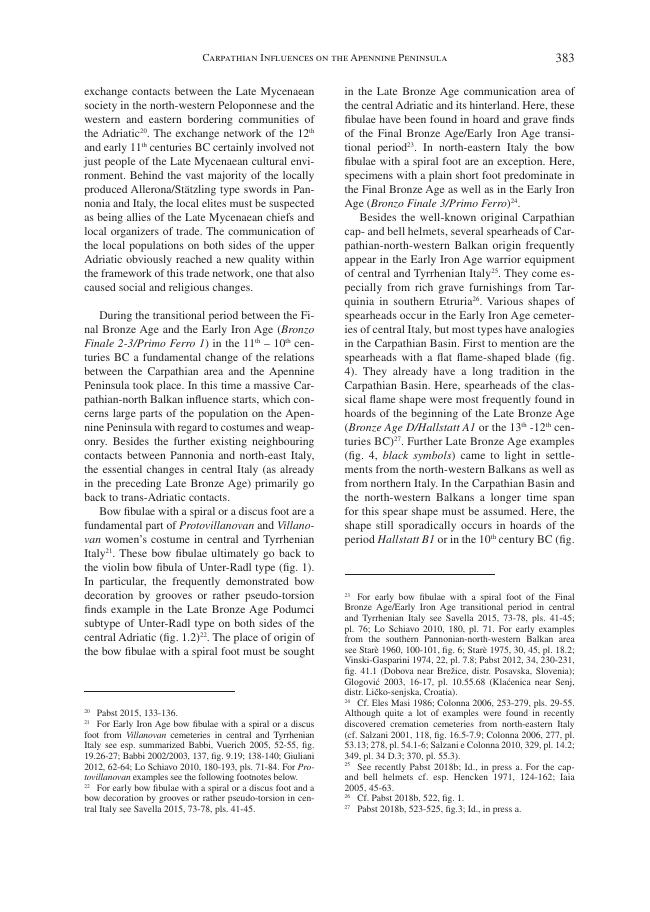Carpathian influences on the Apennine peninsula at the transition from the Bronze Age to the Iron Age : a diachronic survey of the social and historical background
P. 379-387
The present survey focuses on cultural relations between the Carpathian Basin and the Apennine Peninsula at the Transition from the Bronze Age to the Iron Age. The investigation aims to finally reveal the underlying social processes in the different regions and periods. While the contacts between Pannonia and north-east Italy are based on fairly long-term neighbouring relationships, it seems that more complex social processes underlie the trans-Adriatic connections in the 13th and 12th centuries BC. During this period, several foreign costume and weapon elements as well as new funerary and deposition customs appeared on the Apennine Peninsula. That can be explained most probably only by the presence of (at least smaller) new population groups from the Carpathian-northwestern Balkan area.
The postulated population movements of the 13th century BC should be a result of Mycenaean trade activities in the Adriatic, mainly focusing on trade in human beings or slaves. The communication of the local populations on both sides of the upper Adriatic obviously reached a new quality within the framework of the post-palatial trade network in the Ionian and Adriatic Sea during the 12th and early 11th centuries BC. Now one can observe social and religious changes too. The trade activities and the cultural contacts in the Late Bronze Age Adriatic obviously constituted the basis for large-scale human migrations at the Bronze Age/Iron Age transition during the 11th -10th centuries BC. In the end, it can be assumed that the foreign Early Iron Age population groups from the Carpathian-north-western Balkan area played an important role in the genesis of the Etruscans in Tyrrhenian central Italy. [Publisher's text]
-
Artikel aus derselben Ausgabe (einzeln erhältlich)
-
Informationen
DOI: 10.32097/1139
ISSN: 2282-457X



